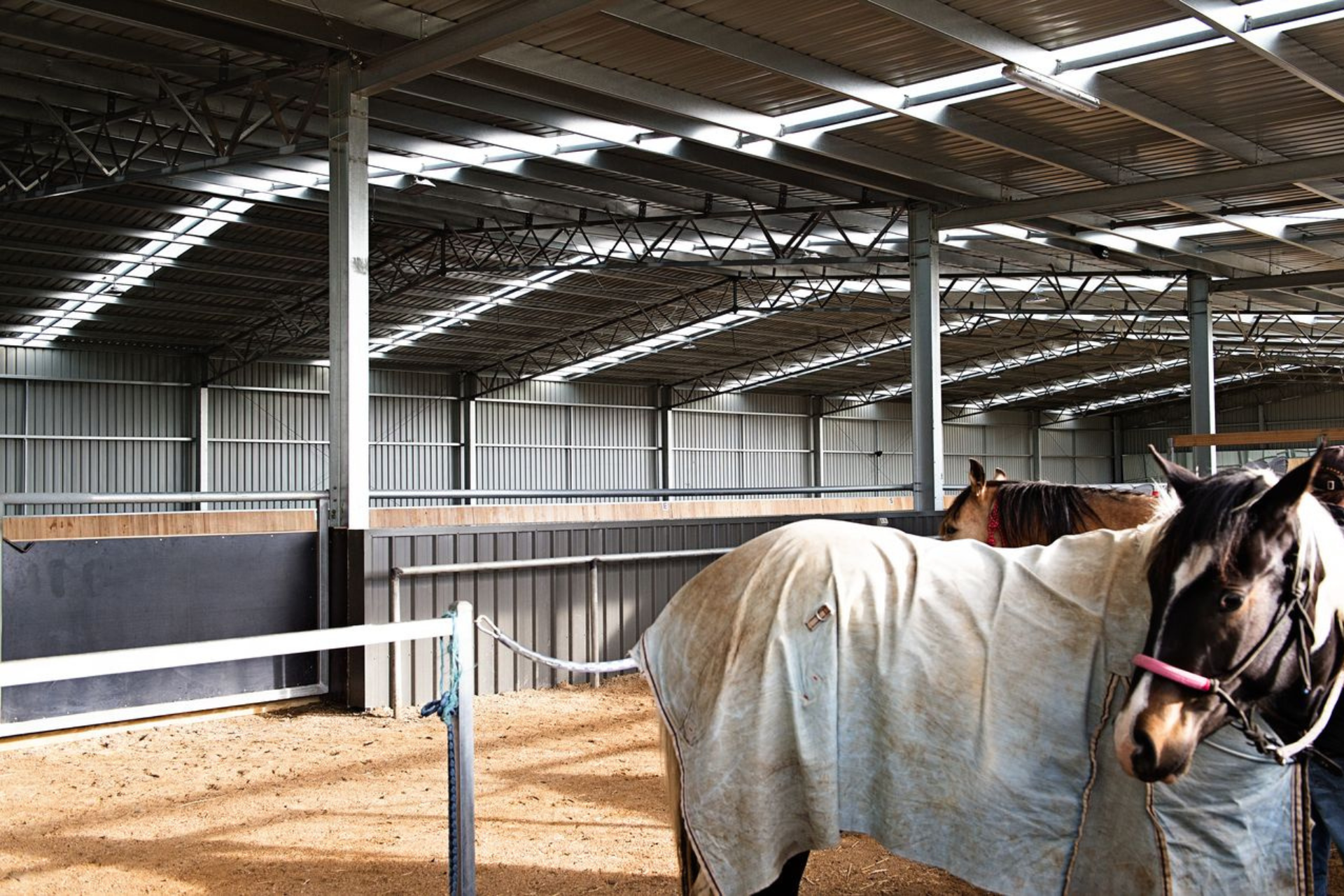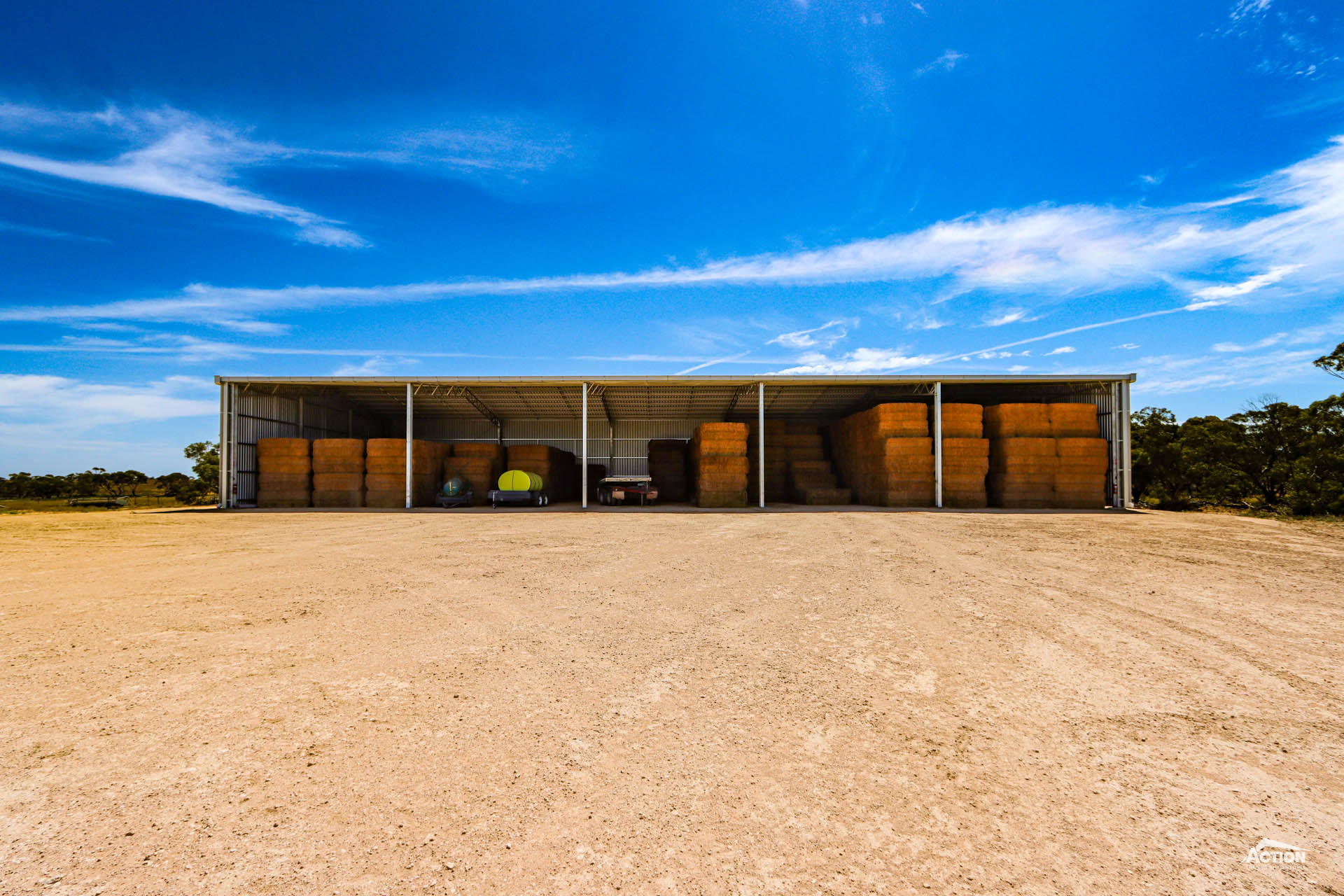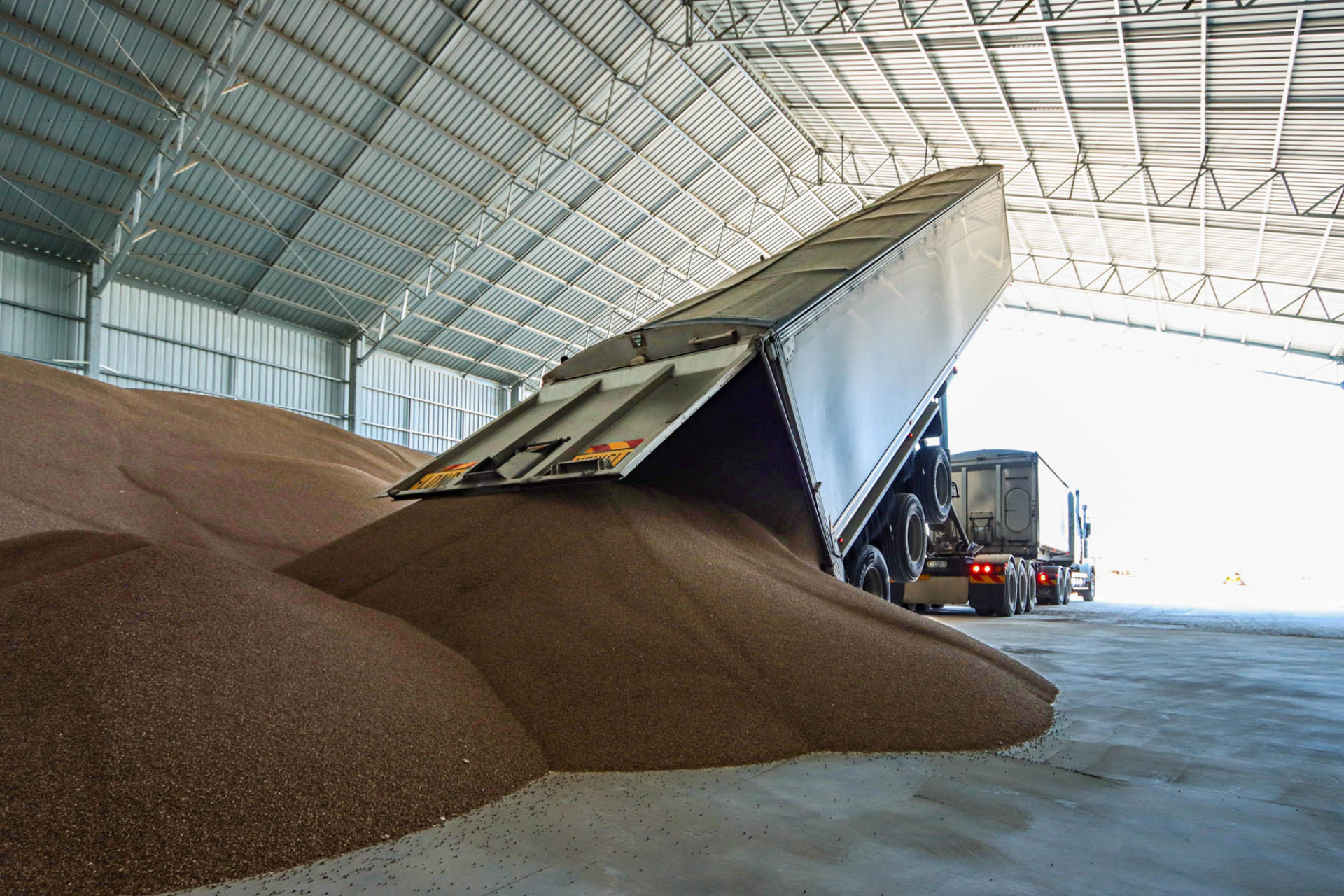Building a cover over your riding arena? Project planning, site preparation and design all play an important part when building an equine arena cover.
Whether you want to use it for dressage, showjumping, campdrafting or as a professional lesson space, here are some of our insider tips for building a covered riding arena that both horse and rider will love!
6 Tips For Building The Perfect Equine Arena Cover
1. Avoid the use of columns
A well designed equine arena makes the most of all available floor space.
By designing for an open, column-free space, you create more freedom of movement for animals, better utilise the space for activities such as jumping or dressage, help reduce the risk of accidents, and help ensure that the floor wears more evenly.
We can vary the column spacings in your cover to accommodate your arena layout. Our building consultants will visit site for an accurate measure up to ensure that there are no columns that interefere with access points or riding areas.
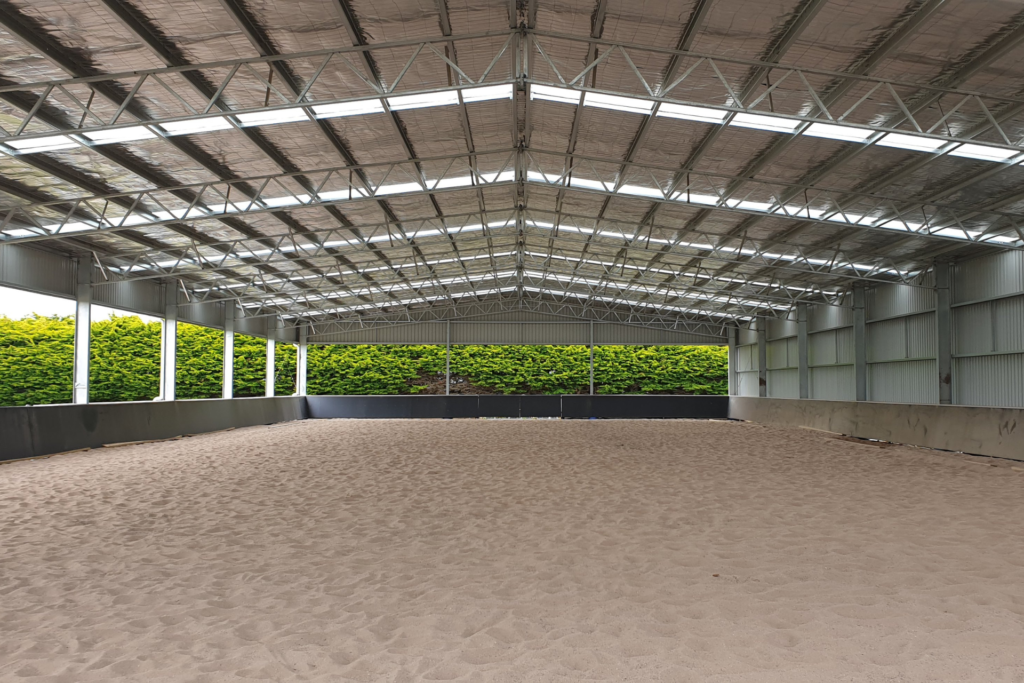
2. Be mindful of drainage
Depending on your site, drainage can be an issue.
Standing water and damp environments can cause issues with horses’ hoofs, and make conditions too slippery for safety.
So, ensure that your arena has appropriate drainage and that it’s built to avoid run-off entering the yards.
3. Don’t skimp on the base materials
Horses can be easily injured attempting high-speed or high-impact manoeuvres on an inappropriate surface. And on the flip side, their hoofs can easily damage a poorly constructed floor.
For these reasons a properly compacted base with a top layer of gently cushioned support that provides appropriate traction is a must. Wood shavings, rubber, sand, and limestone and granite chips are all options for your top layer.
In the video below, Ben outlines our top 10 tips for shed site preparation. You might find this helpful when preparing the site for your riding arena.
4. Consider use patterns
Before you start building, think about the type of traffic patterns that your arena will likely see, and how this will affect its durability.
Factor this into the overall design of the arena and your maintenance plan. For example, regularly raking the floor helps to keep the top layer evenly packed.
5. Choose large openings
Because horses can get spooked in narrow spaces, it’s imperative to select appropriately-sized entrances that offer plenty of room to calmly move in and out.
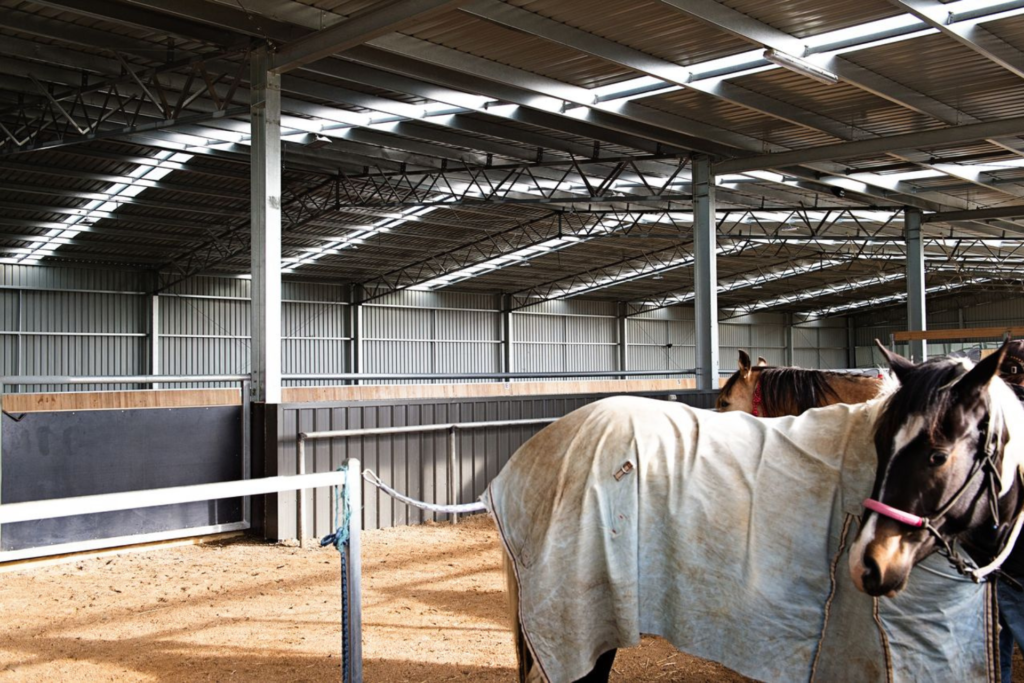
6. Opt for durable, low-corrosion materials
A horse riding arena endures plenty of wear and tear and can be a highly corrosive environment.
Choose options such as hot-dipped galvanised trusses and columns, as these will help ensure the longevity of your arena cover.
We hope these six steps have helped kickstart ideas for your equine arena cover! A well designed riding arena cover can provide a great environment for riders – and a safe and comfortable one for horses as well!
If you are looking for more ideas and design suggestions for your project, talk to one of our building consultants. They can advise you on details such as as skylights, ventilation options, gable infills and storage areas.
You might also find these articles helpful:
- Featured Project – 24 Metre Span Horse Arena Cover
- What Is Lead Time For A New Shed?
- How Does Cold Weather Affect Horses?
- How Does Hot Weather Affect Horses?
- What Is Low-Stress Livestock Handling?
Or for the latest farm shed news and resources, browse our Learning Hub.

